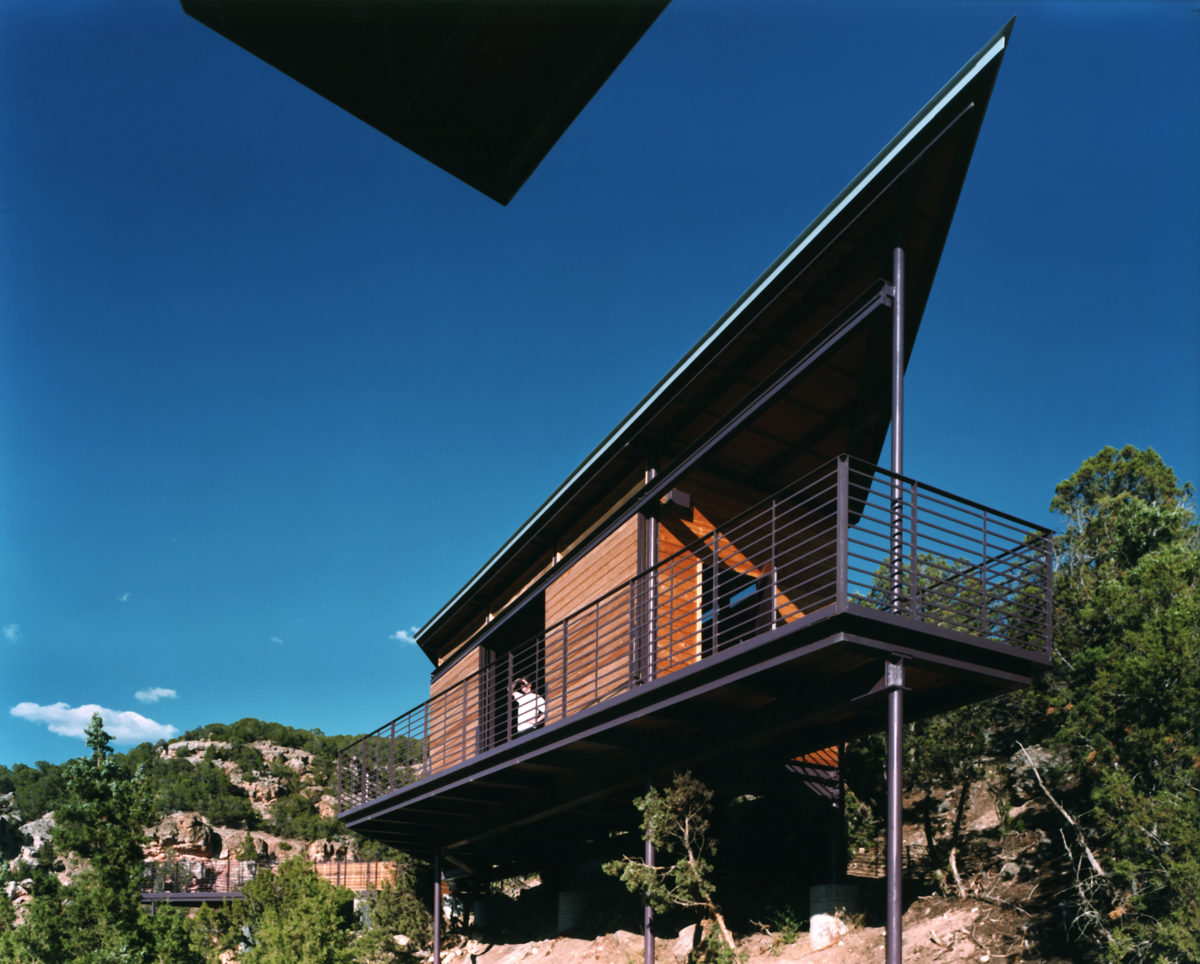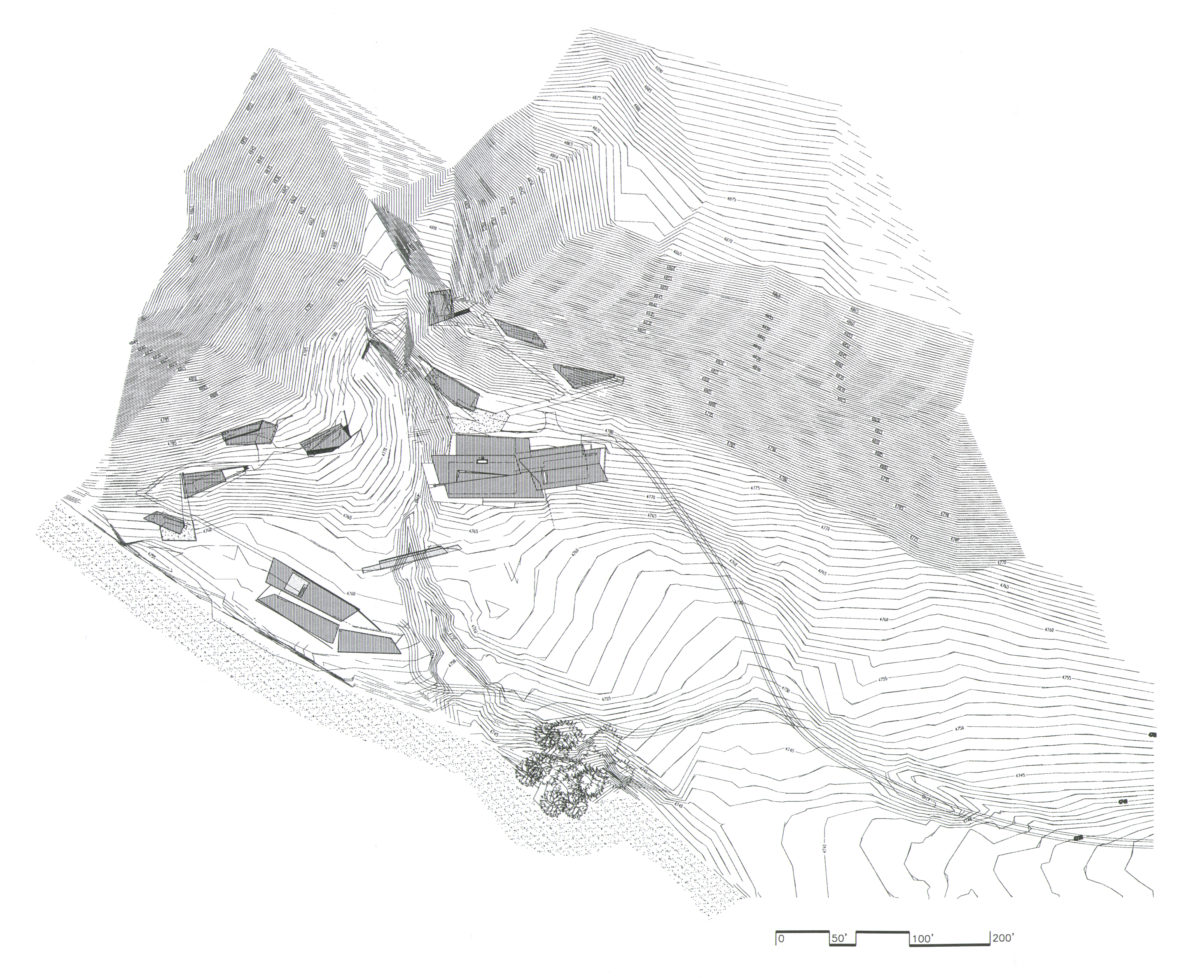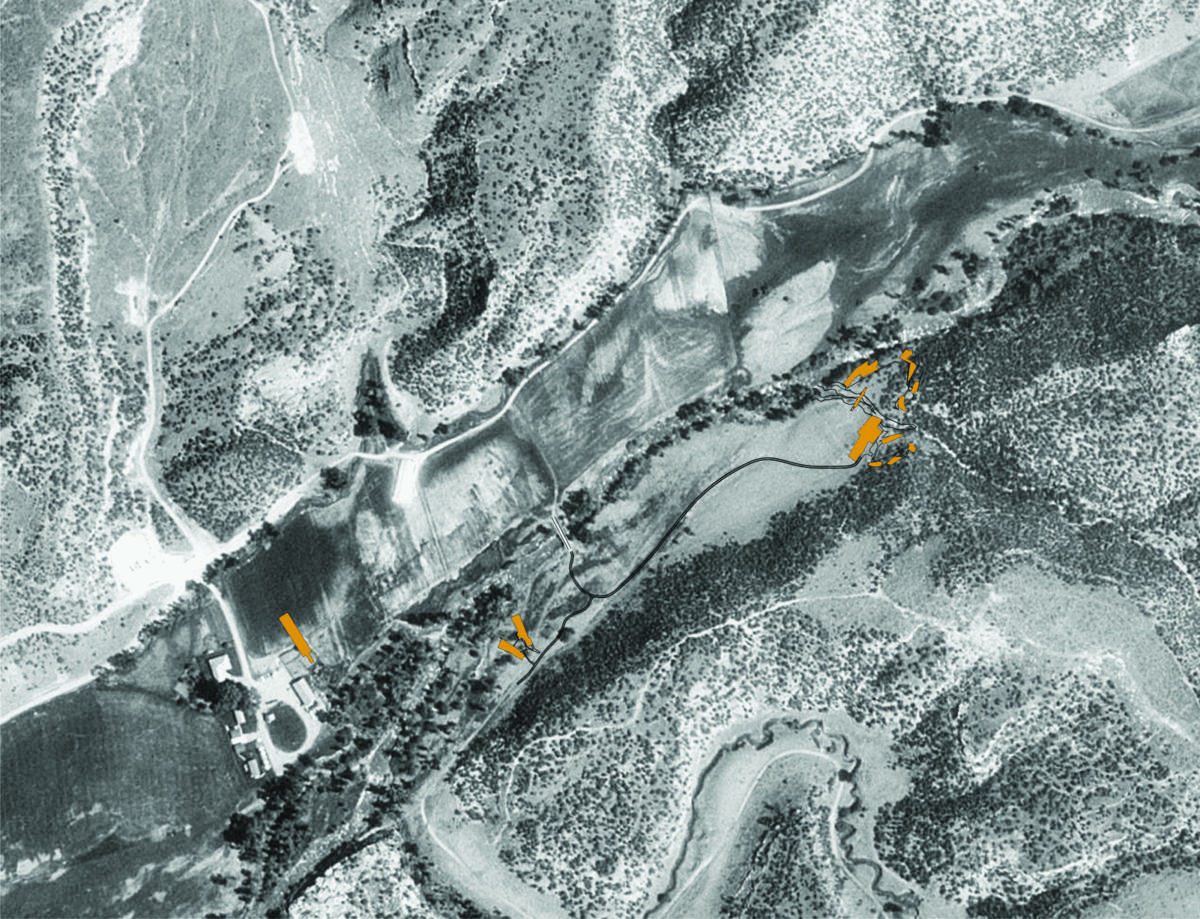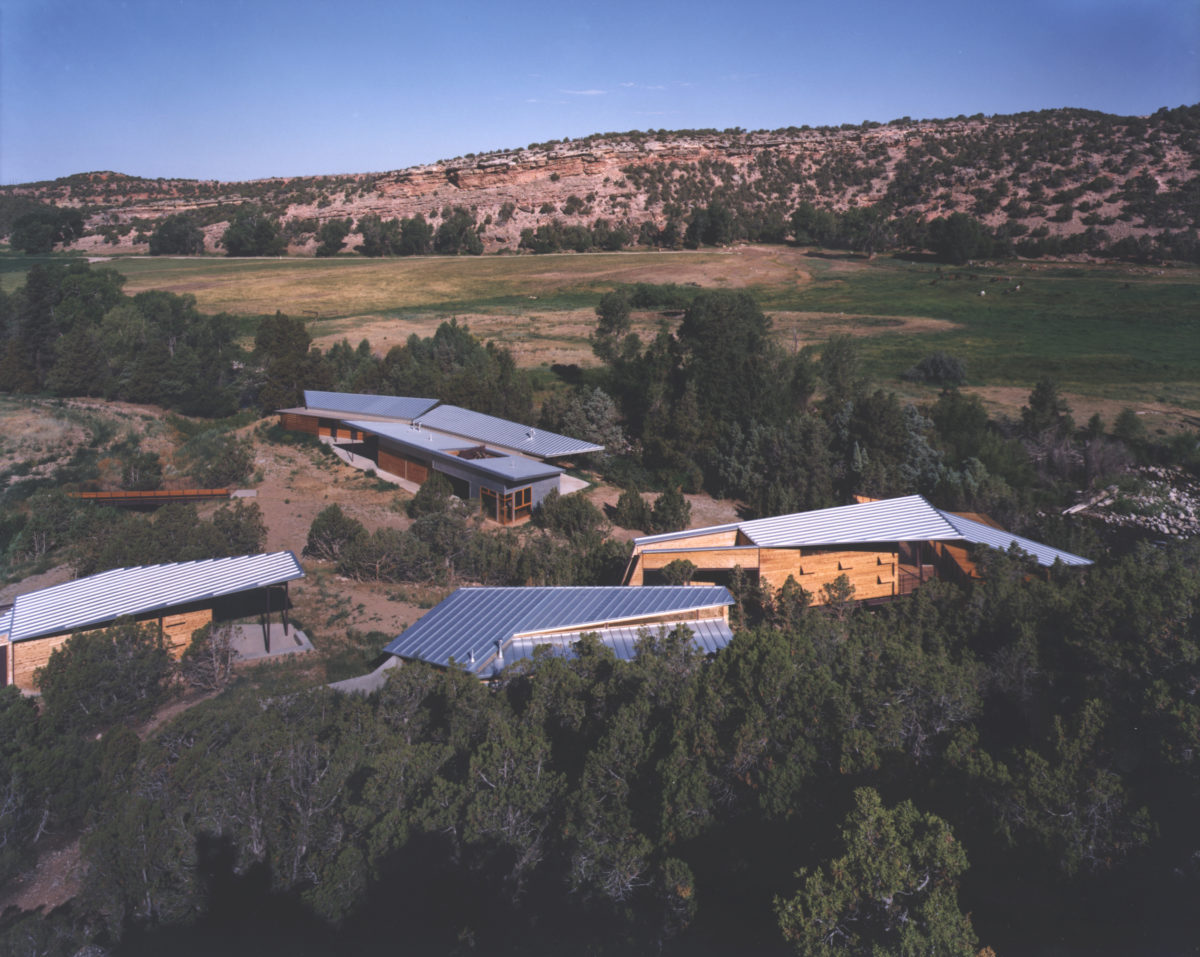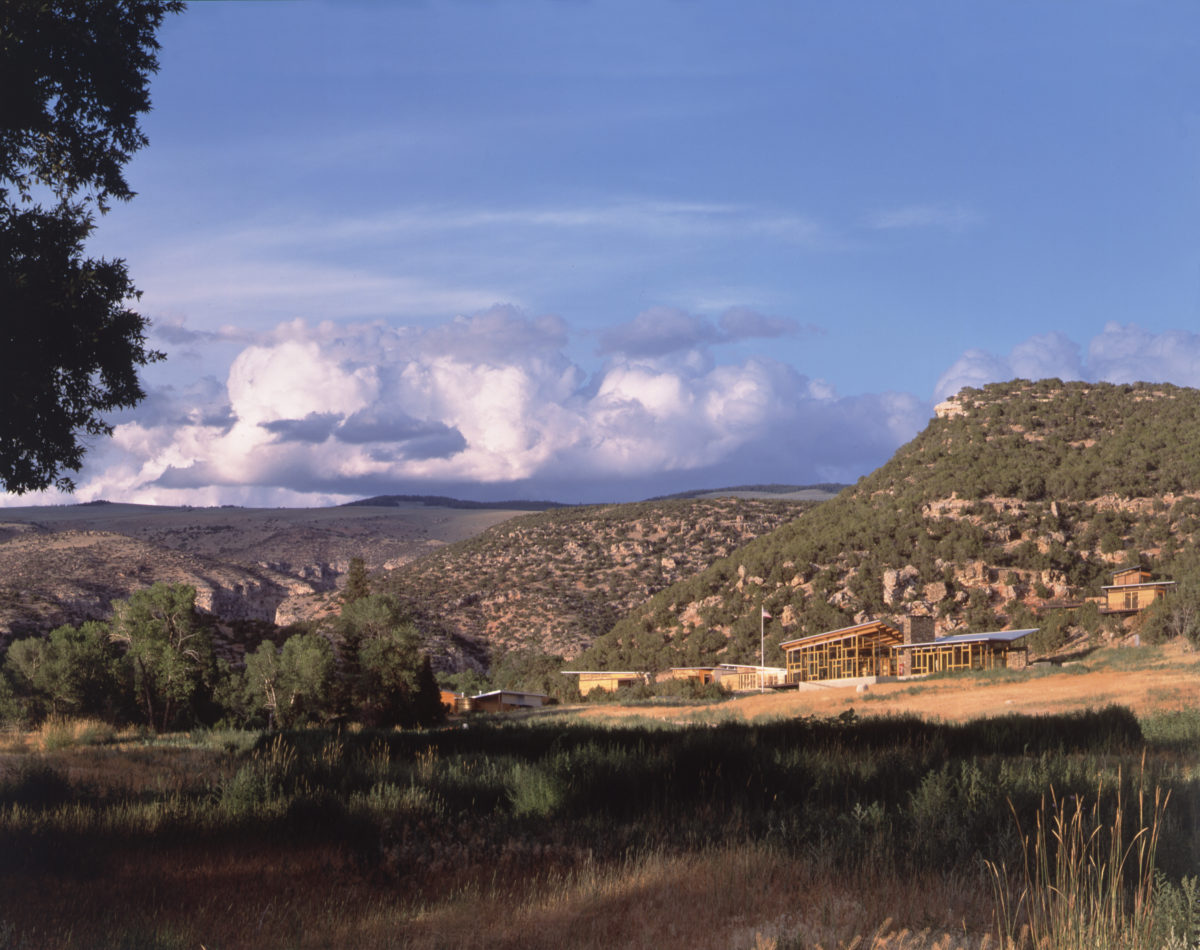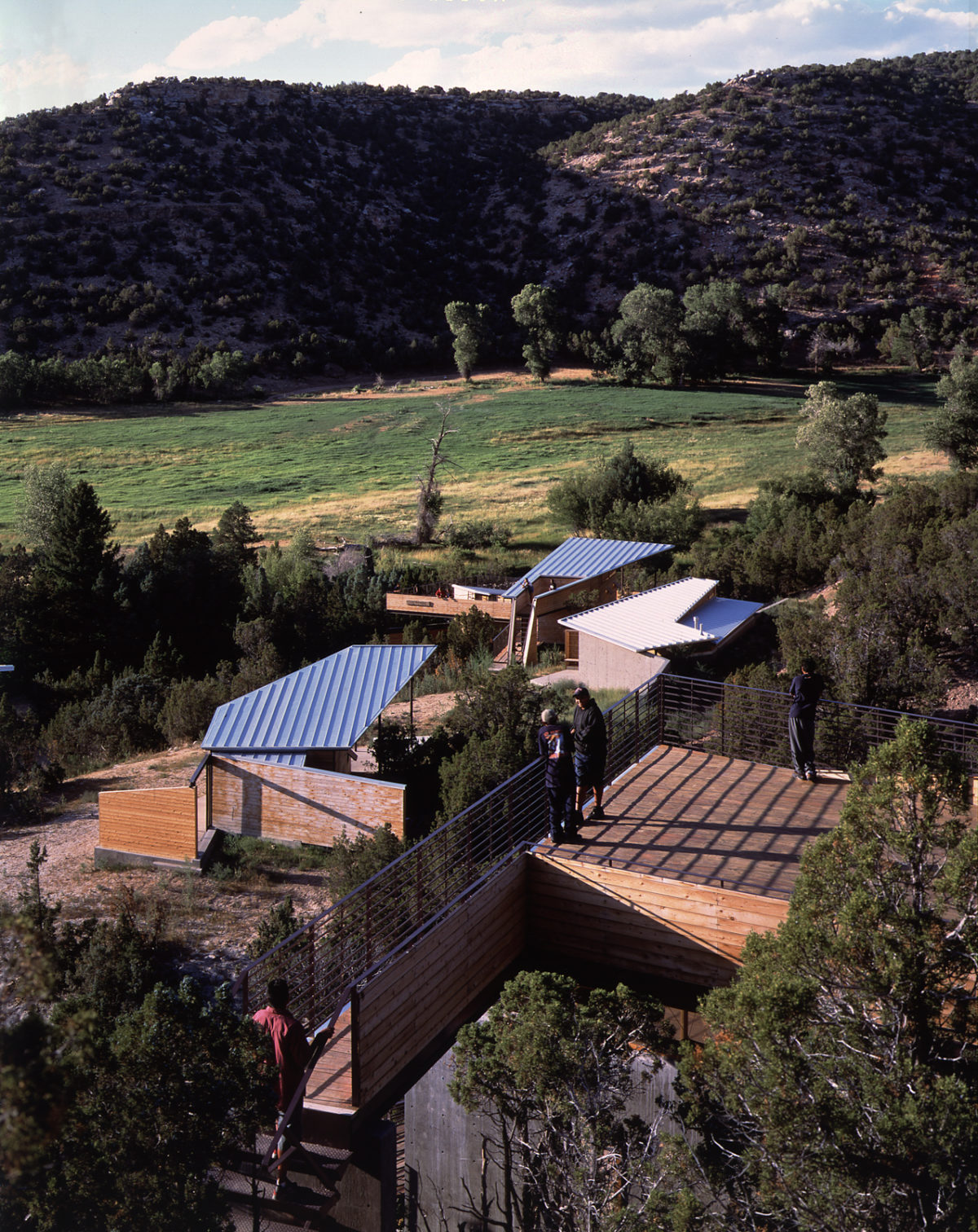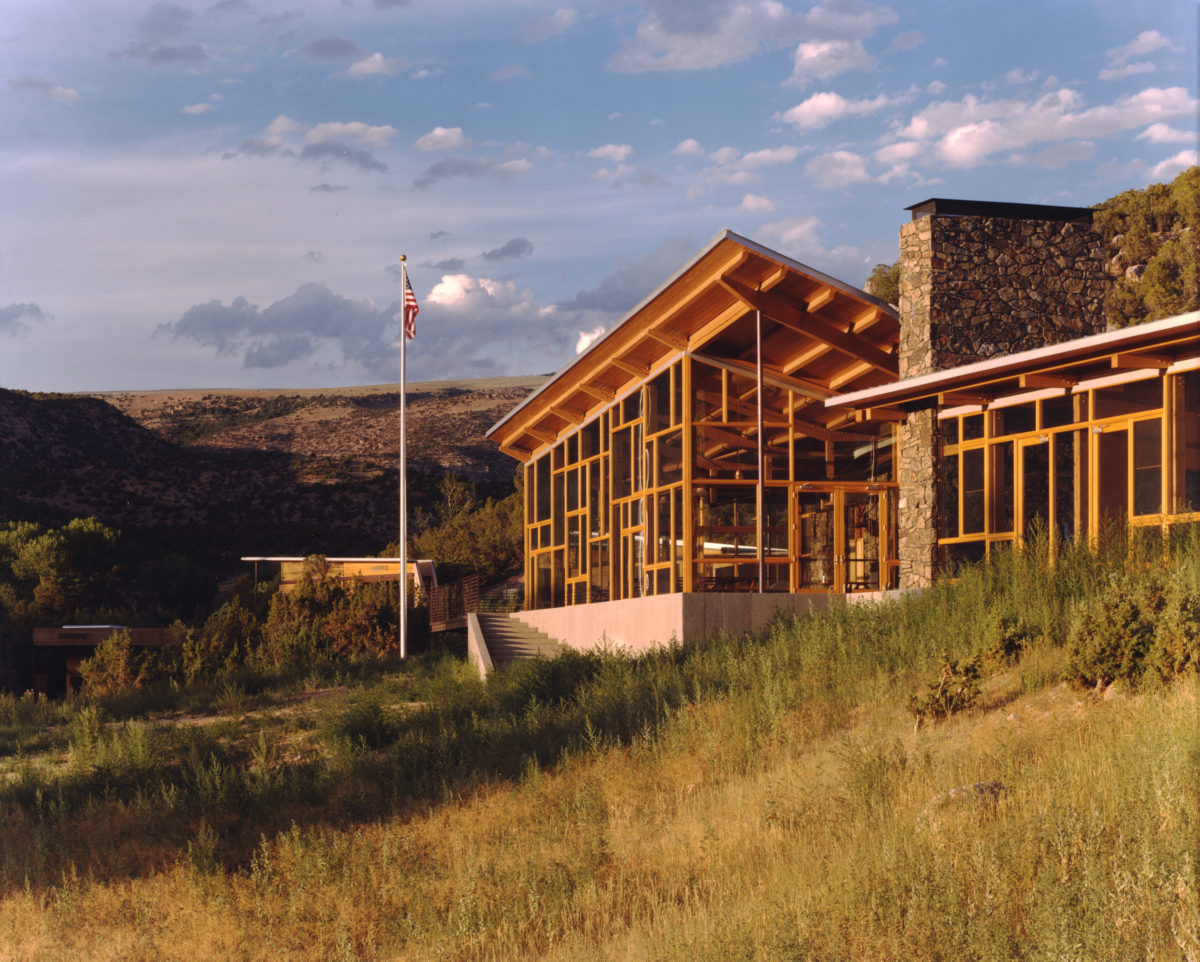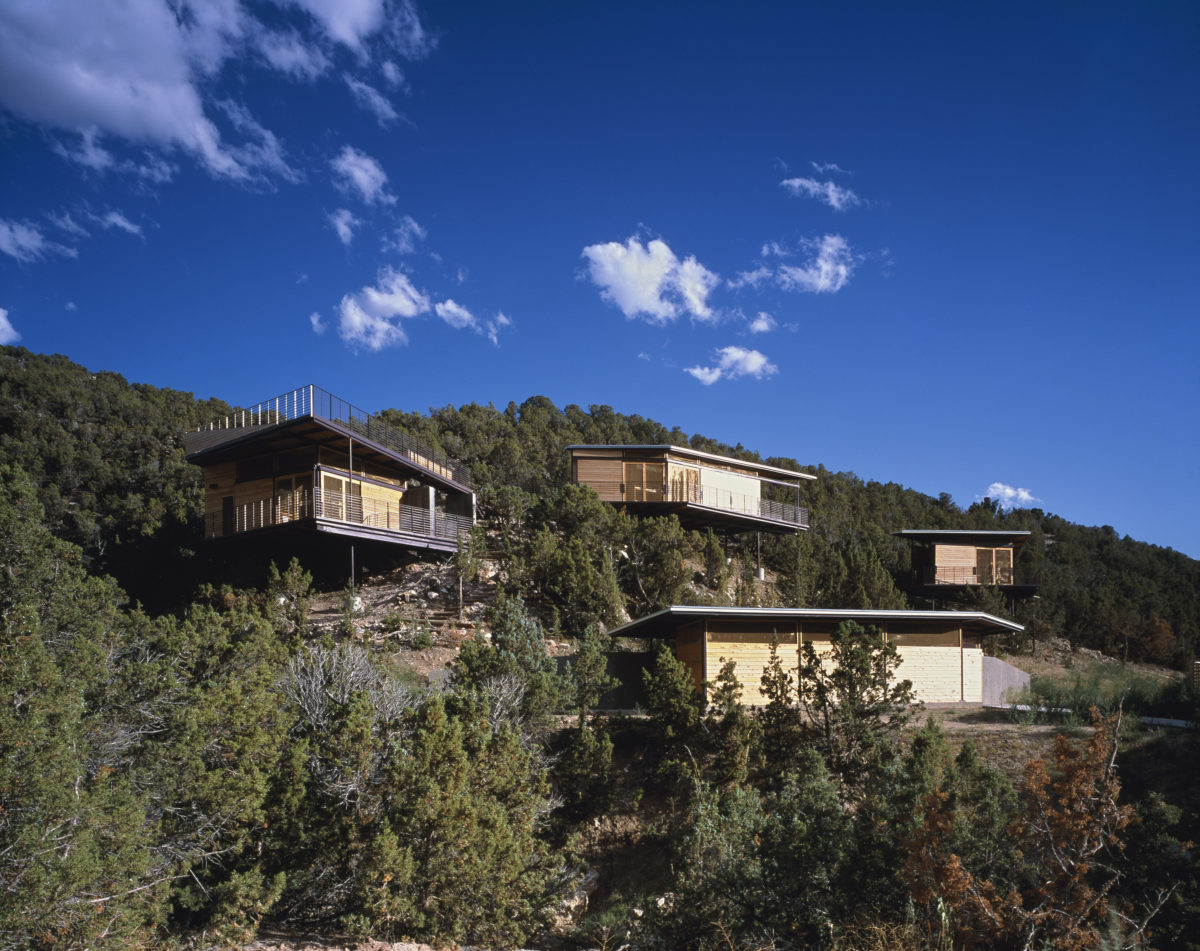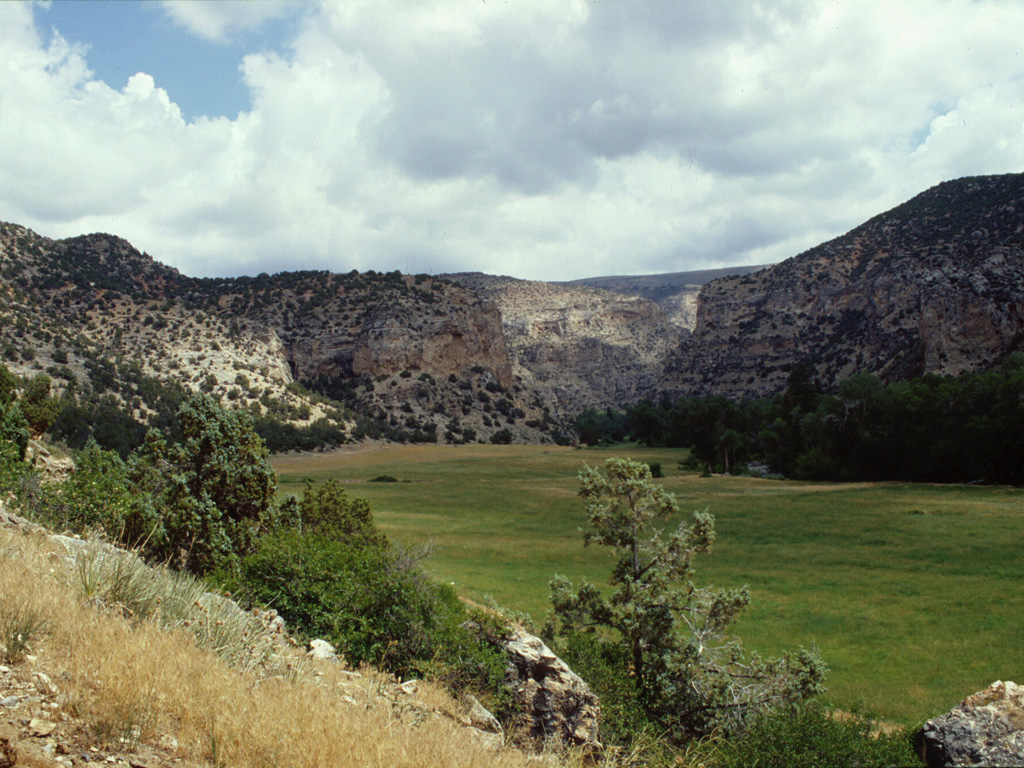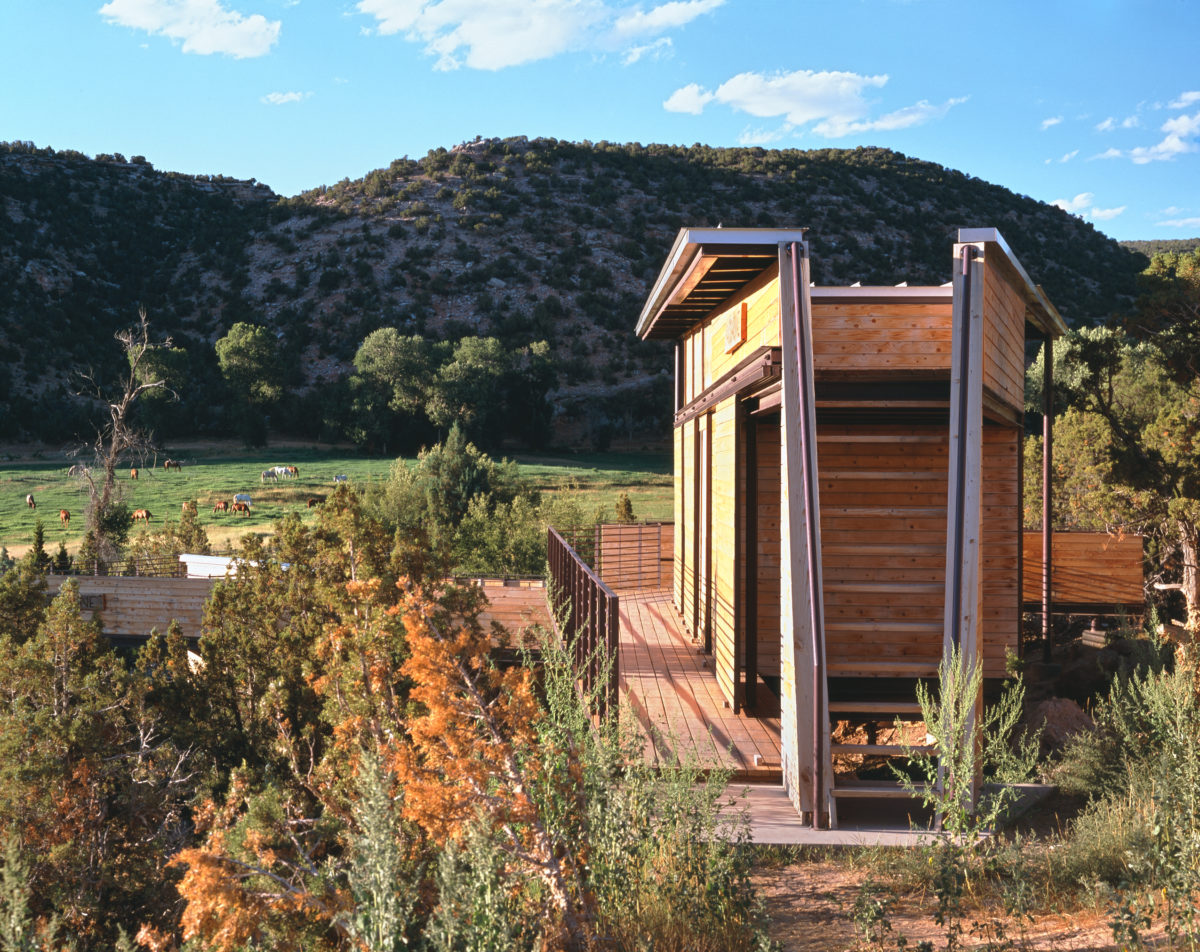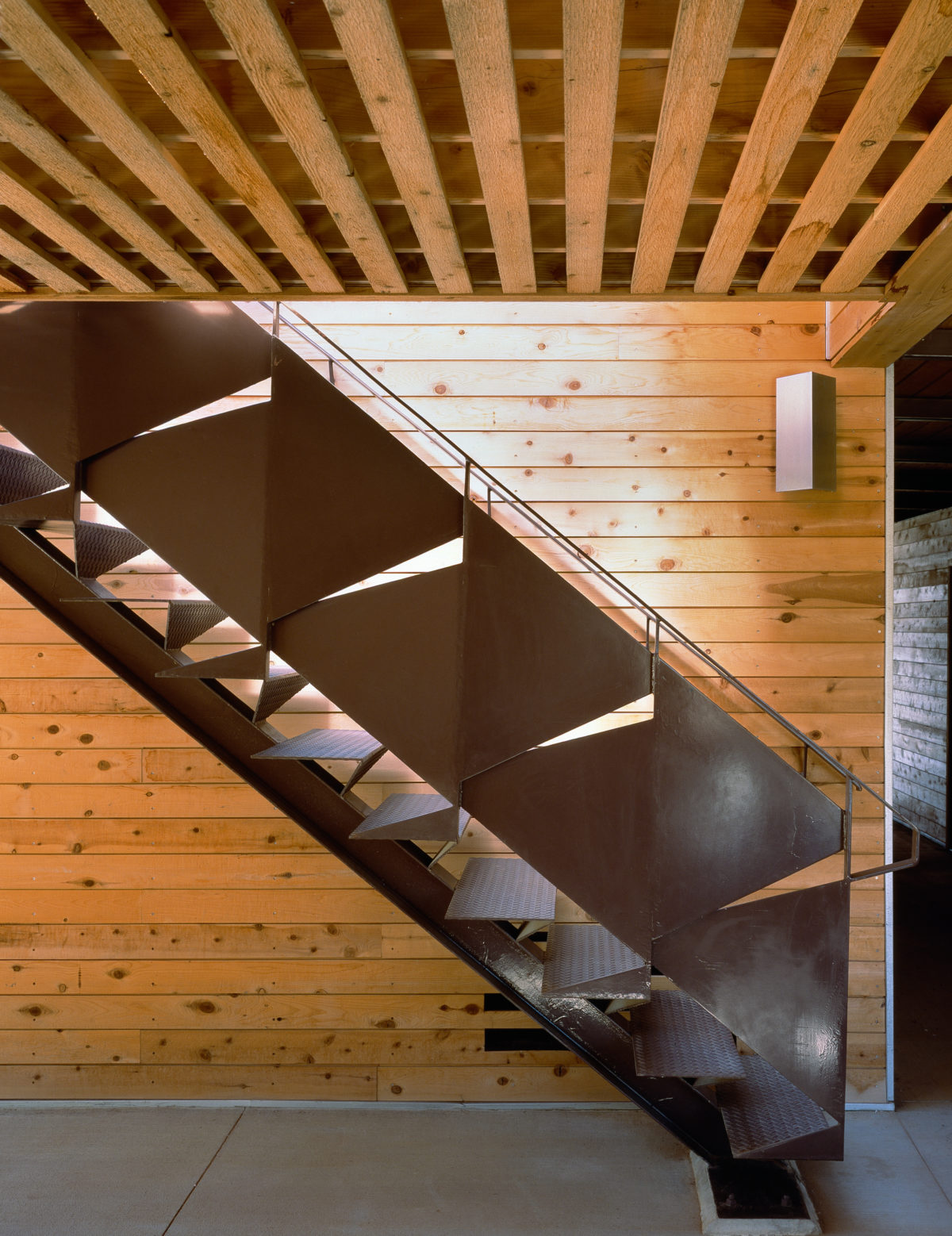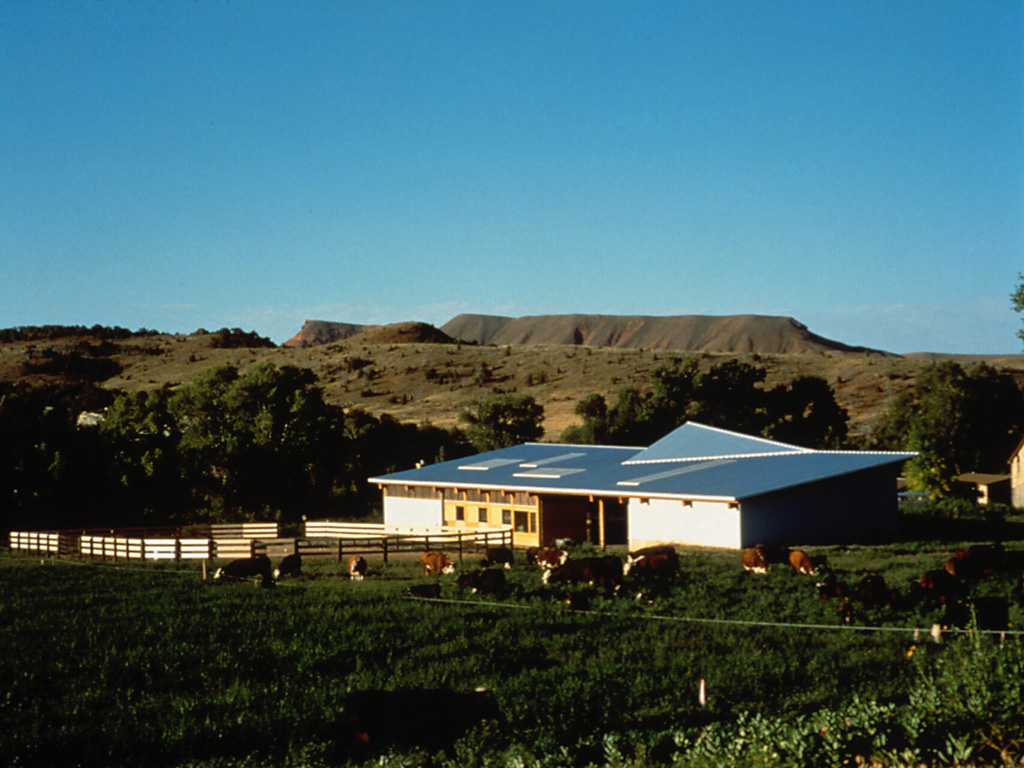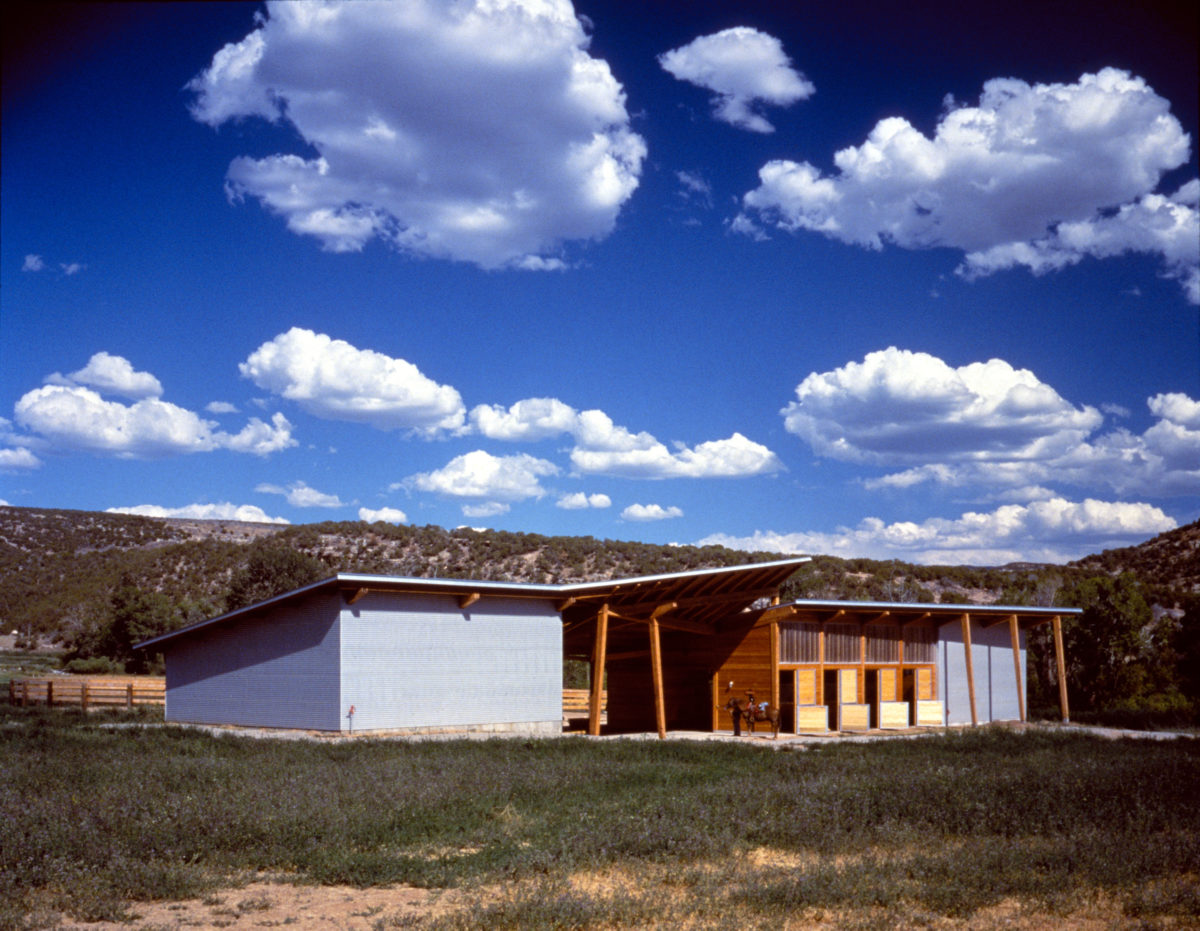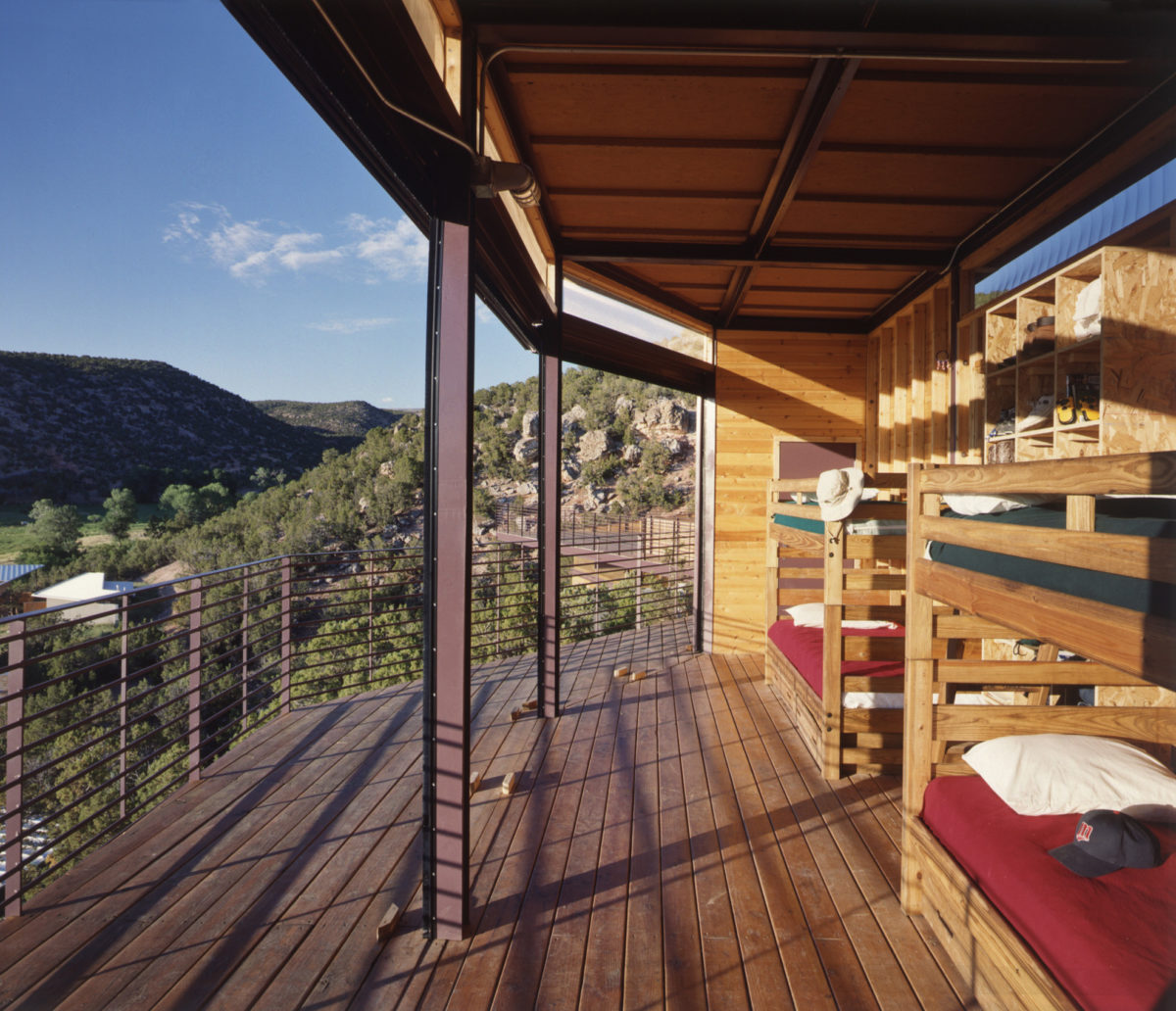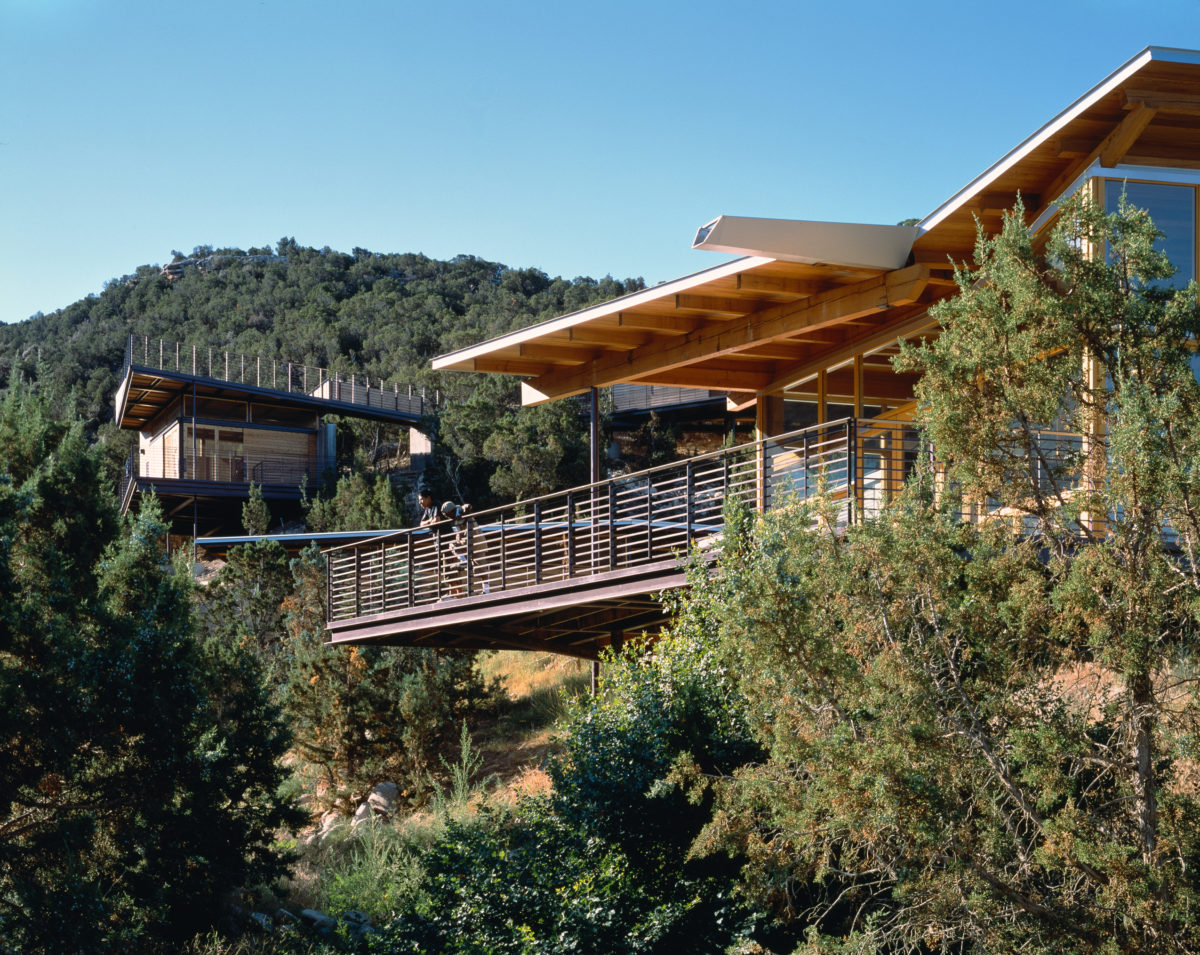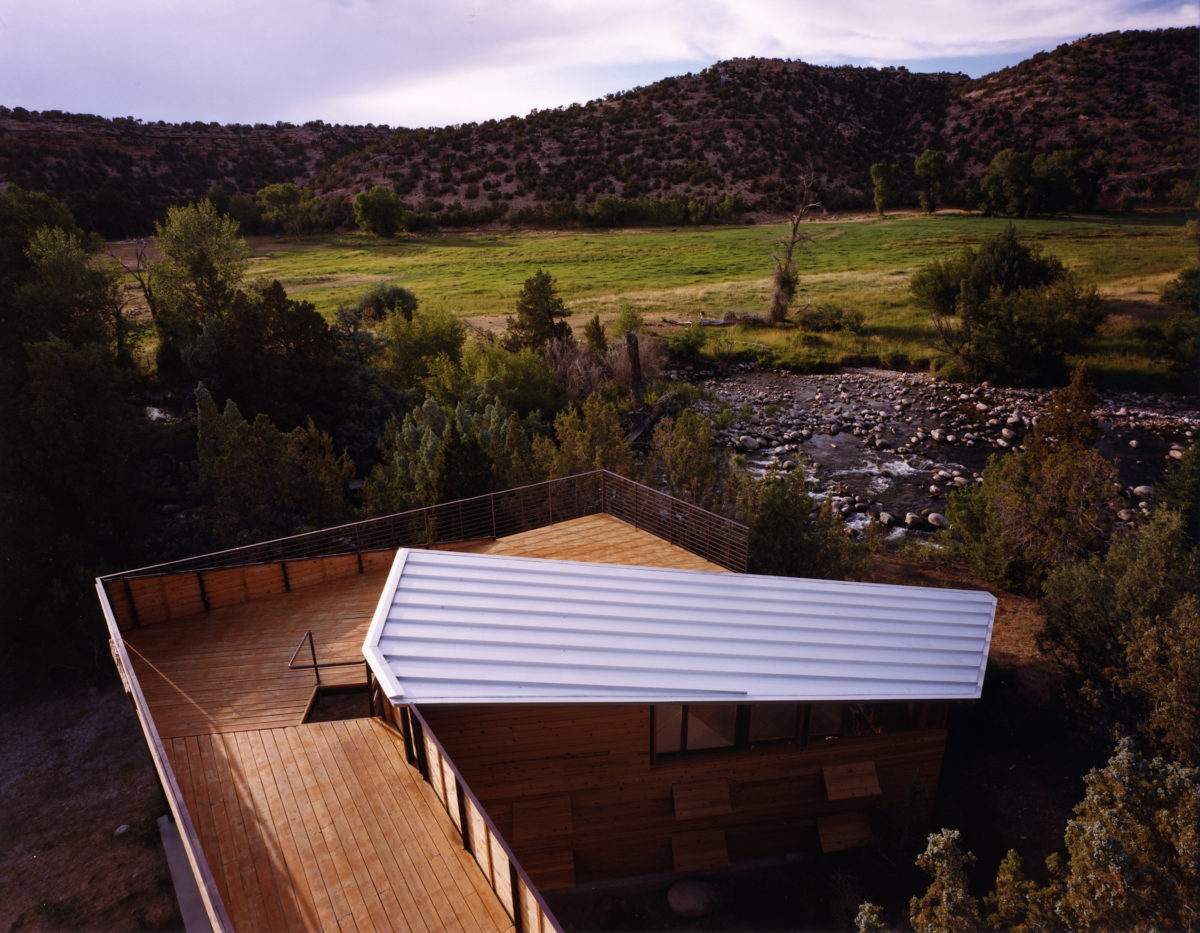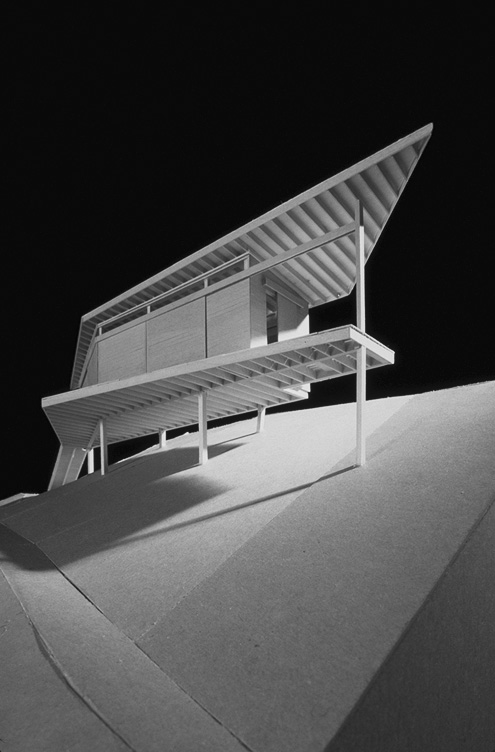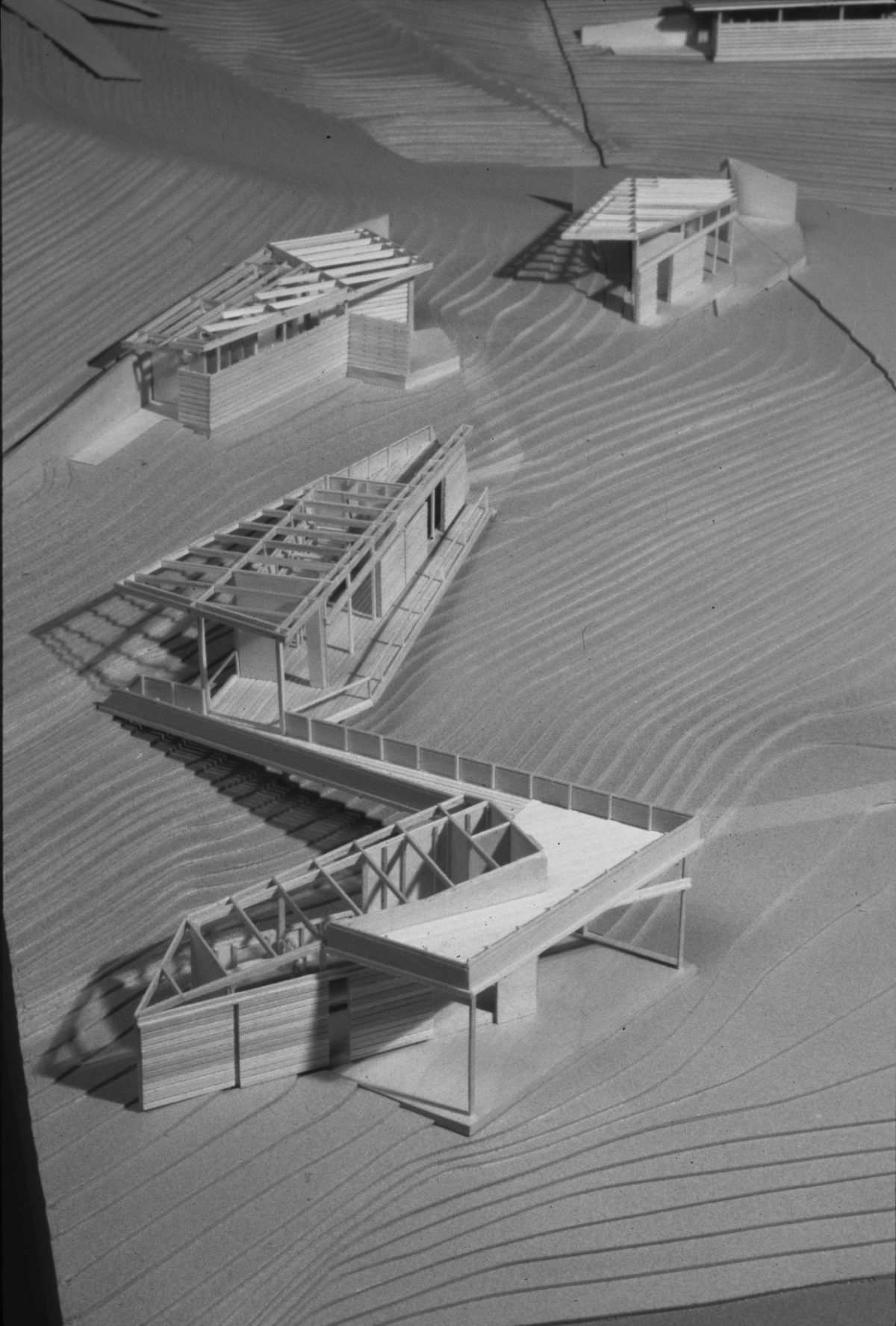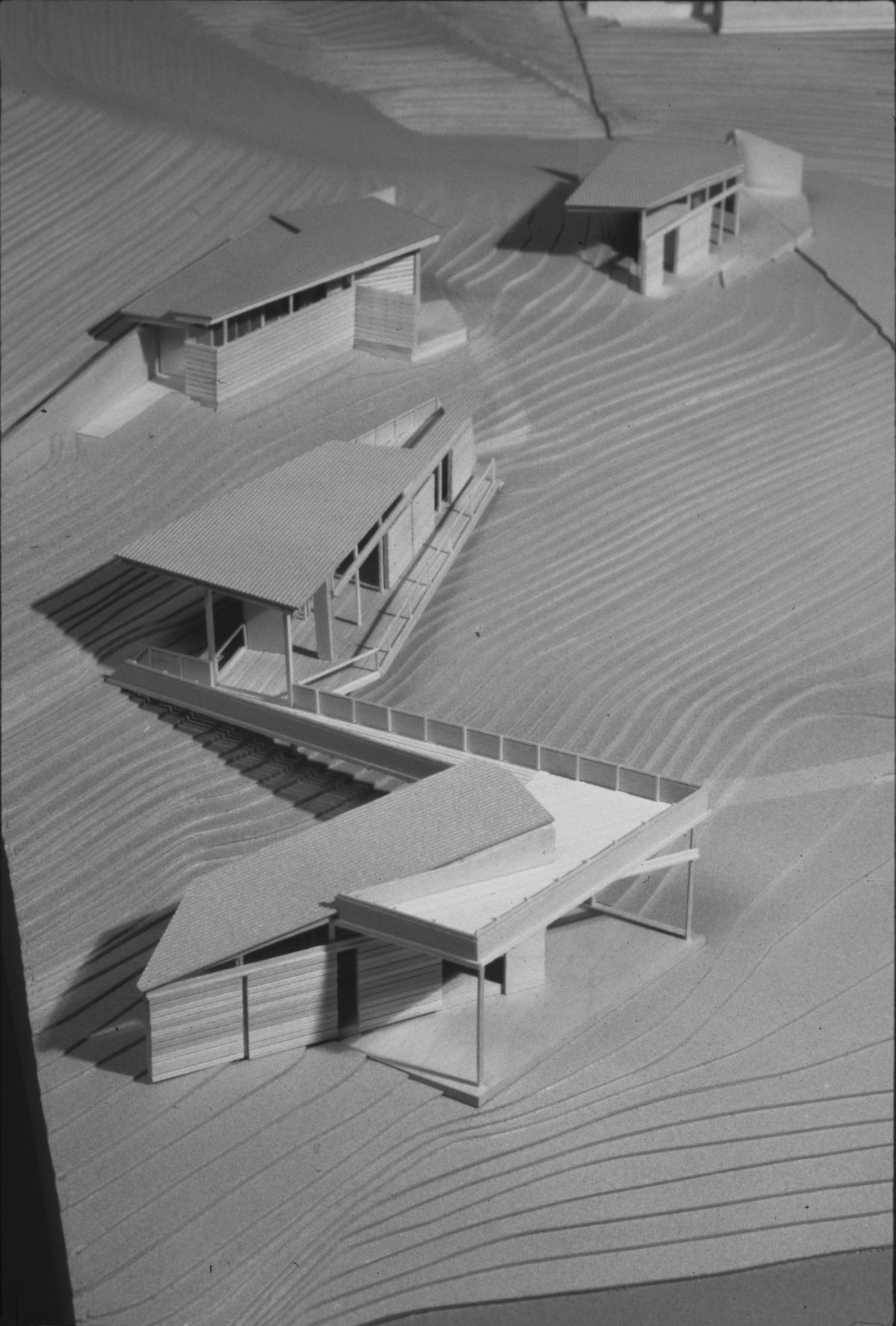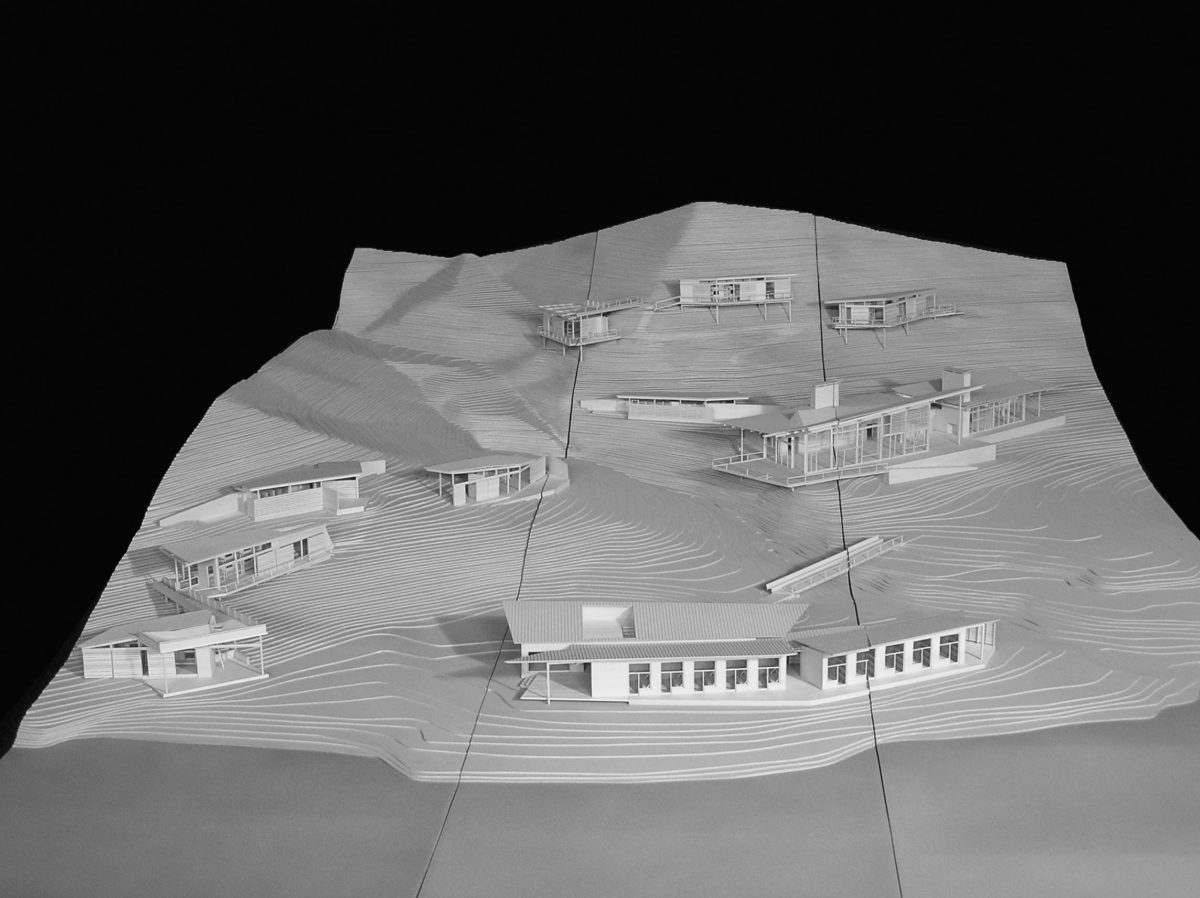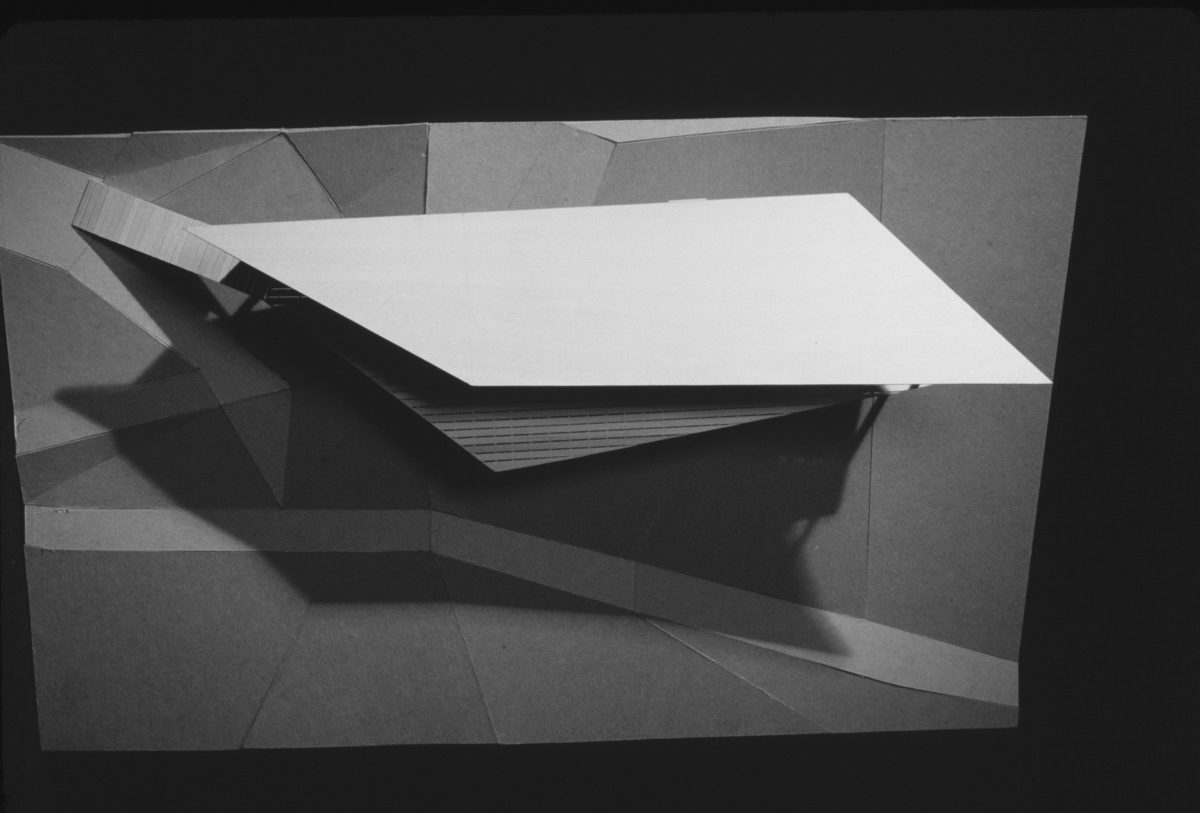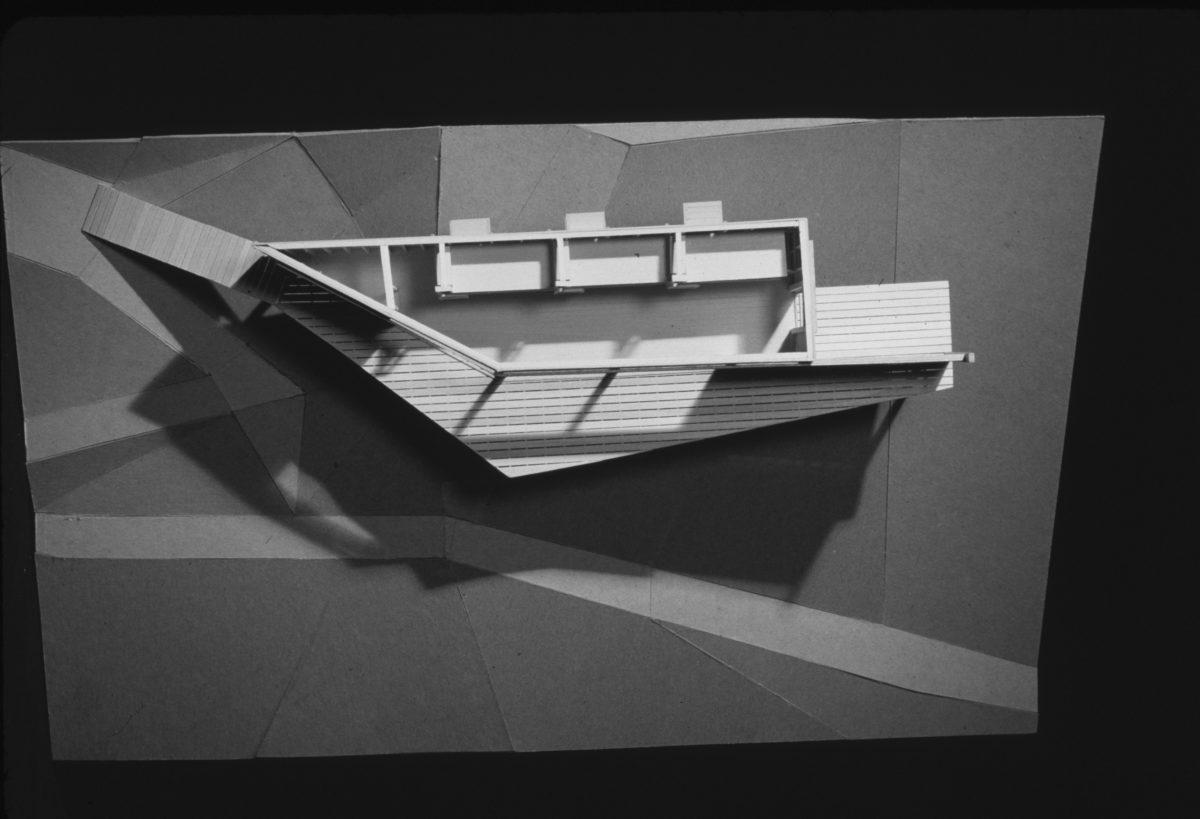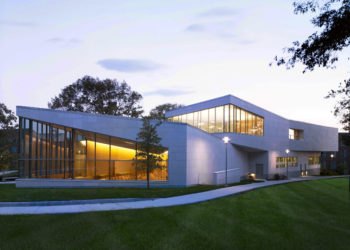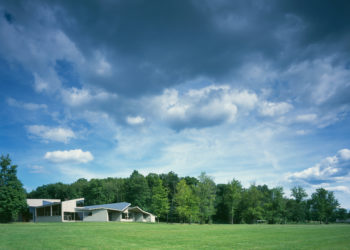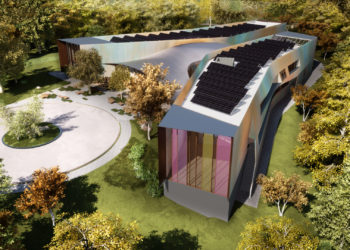Camp Paint Rock
Hyattsville, Wyoming
Camp Paint Rock is a summer camp for urban 8th graders from Los Angeles with academic and leadership potential, and a desire to pursue a college career with the help of a five-year mentoring program sponsored by the Alm Foundation, a private L.A. non-profit. The project reflects the camp’s philosophy of self-reliance and risk-taking. So we began by asking: How can our buildings encourage teenagers to confront the unfamiliar? How do we create architecture that promotes self-reliance within an interdependent community?
The plan we developed harnesses the dramatic elements of the West—its geology, its ruggedness, its compelling landforms—into an architecture that in itself is a type of western landscape: a canyon rim, a rocky ledge, a steep hill to scale. The campers are involved in a process of discovery of the natural world, experiencing the playful expression of natural light, the fluctuations of wind and rain, and the sounds.
Each building stands independently but connects through a series of pathways and bridges; steel-framed cabins perch on the canyon’s steep walls, creating lookouts and stunning views. In other cabins, sliding doors open to the sky; ladders and roof decks entice campers to climb and explore. Openings in the roofs, such as in the main dining hall, evoke the fissures and crevices of the region’s rock faces and allow in abundant northern light. Seen from above, the individual buildings, which connect via bridges and informal pathways, make a light impression on the land—almost like a grouping of tents—and yet together form a substantive community.
Jurors immediately appreciated the ecosensitivity of Camp Paint Rock. Designed for 76 inner-city Los Angeles school children, the camp comprises 16 buildings, including cabins, a dining hall, and the director’s house. The cabins are placed within the slope of the canyons and lifted above the ground so as not to disturb the existing vegetation or mar the view. ‘The use of materials in context is perfect’ Boym said. McGowan noted, ‘It’s socially responsible. They function and teach a lesson.’
Juror Comments, Annual Design Review, International Design Magazine
The roof of the Dining Hall is inspired by geologic fault lines: fissures create openings for views up the canyon and allow in natural light. The chimney is clad in locally sourced stone.
Sensitive to the differing ground patterns, it recalls the camp established by Frank Lloyd Wright at Ocotillo, successfully capturing the sense of those first moments of settlement and a tentative occupation of the land.
Brian Carter and Annette Lecuyer, All American: Innovation in American Architecture, Thames & Hudson
Just as the campers use the site—its rock faces, streams, meadows, and trails—in varied ways, so too has the architect shaped and sited his buildings in response to a range of landscape conditions. The three boys’ cabins, hovering over a canyon wall, are raised on columns, carefully placed to minimize site disturbance. Meanwhile, the three girls’ cabins, across a gully, nestle into the land, and the shower buildings, with deep-set retaining walls, are further embedded into the hillside. Large rolling screen doors and outer wooden panels open the cabins to the outside. Through roof decks, lookouts, and elevated, interconnecting walkways, the scheme offers lots of views and overviews, encouraging different ways of seeing the landscape…
Sarah Amelar, Charles Rose Architects echoes the vast landscapes of north-central Wyoming in Camp Paint Rock, a life-changing program for inner-city teens at risk, Architectural Record
The arrangement of buildings on the site traces out the contour lines across the canyon and responds to orientation and the weather in ways that recall the wisdom of the vernacular. This scheme embraces a seemingly unique American pragmatism to juxtapose landscape and material in a way that recalls those minimal shelters built in the first tentative moments of settlement in the west. However Paint Rock Camp also embodies a spirit of economy, experiment and social concern that recalls the programmatic ideals of the Case Study House Program
Brian Carter, Residential Settlement, The Architectural Review
